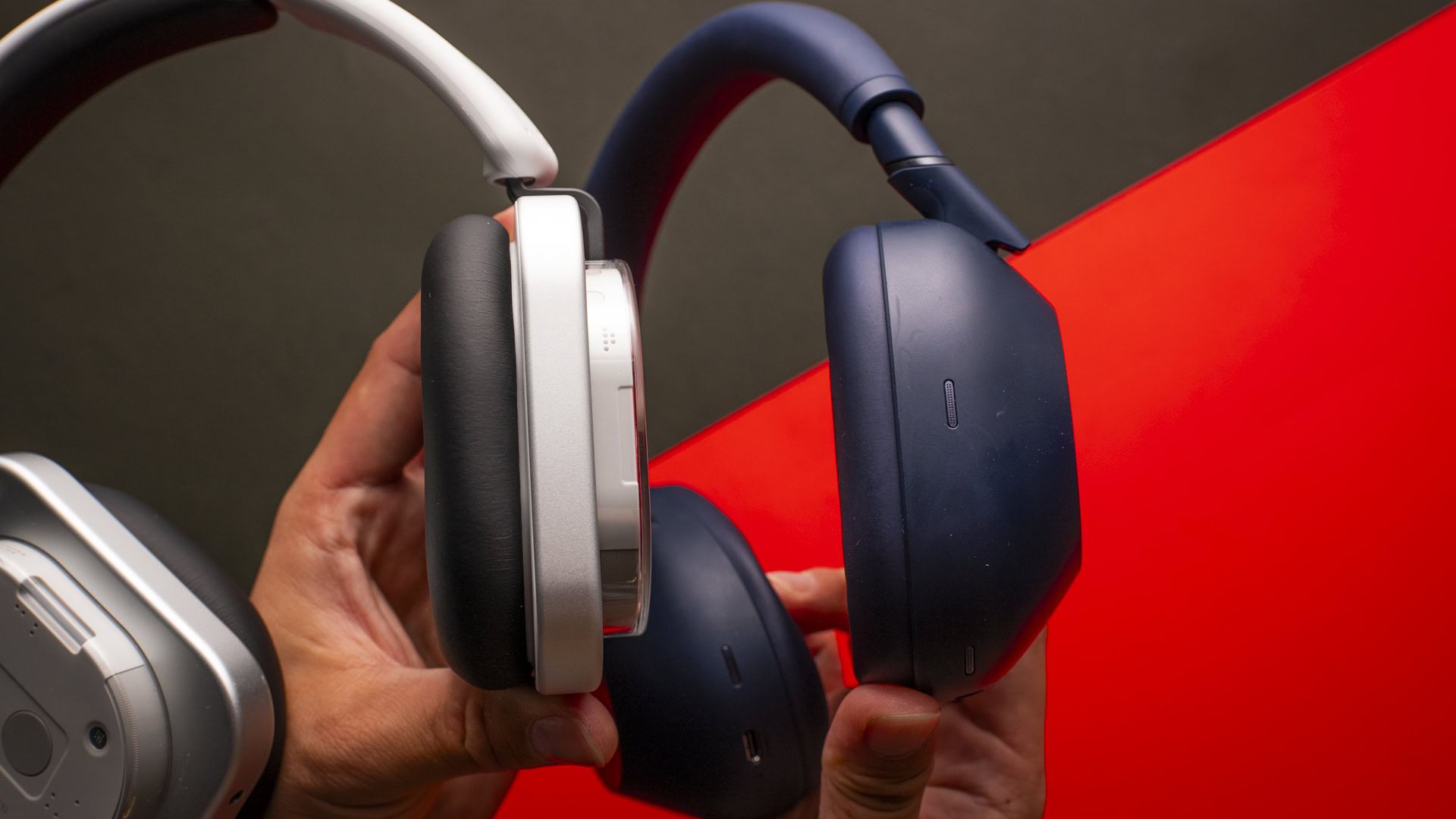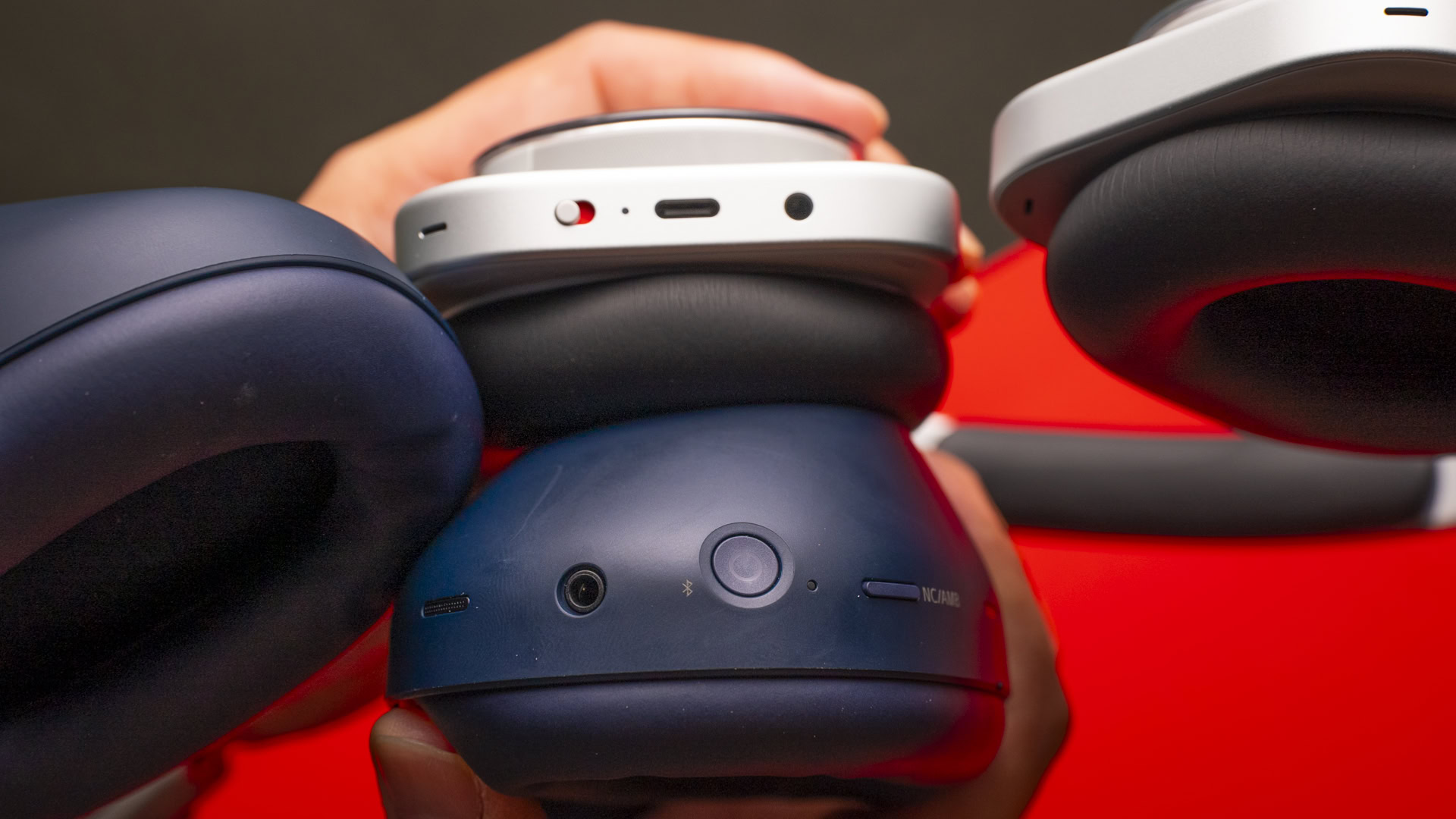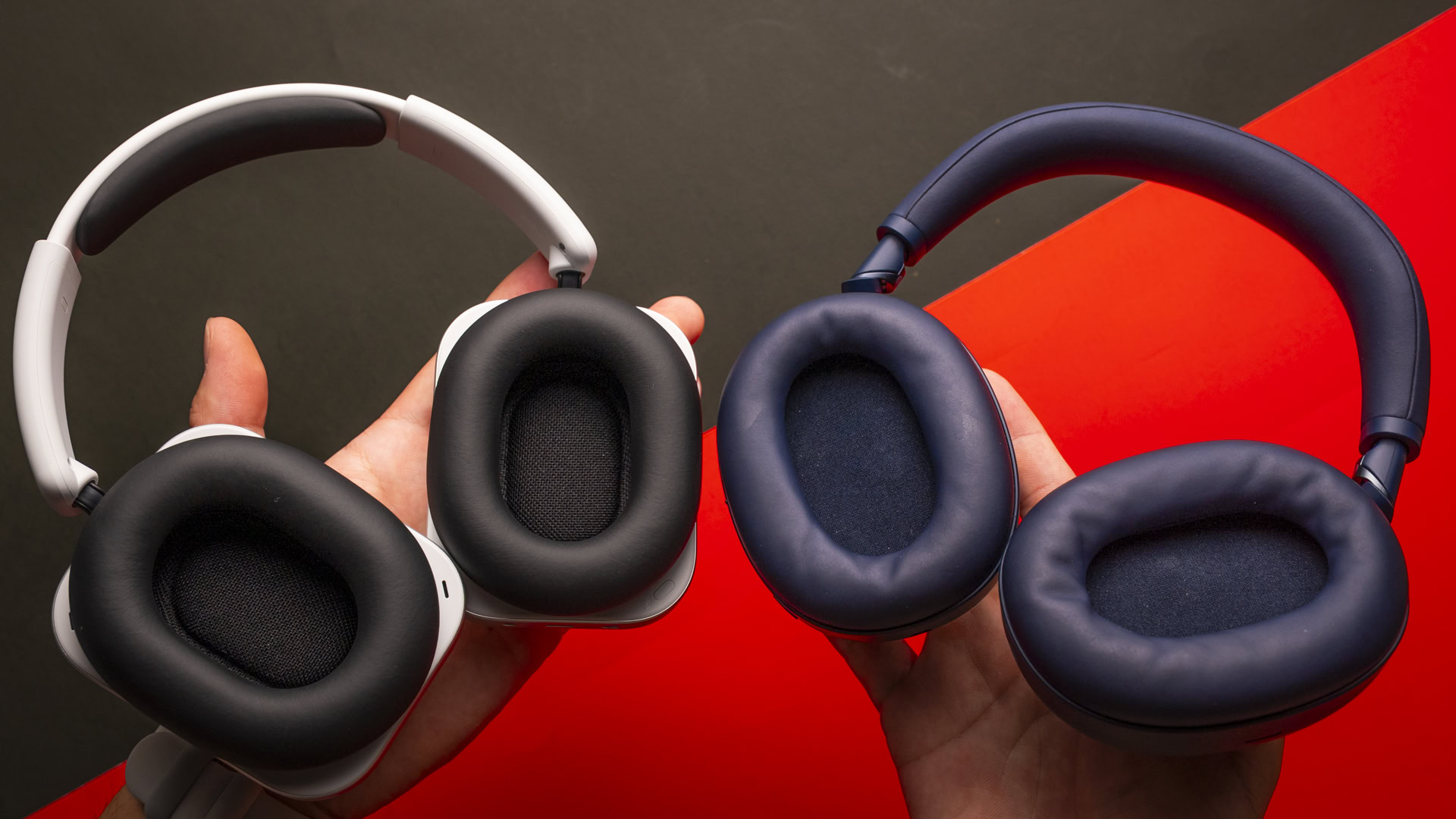All products featured are independently chosen by us. However, SoundGuys may receive a commission on orders placed through its retail links. See our ethics statement.
Nothing Headphones (1) vs Sony WH-1000XM6: Can an outsider take the ANC crown?
July 23, 2025




The active noise canceling headphone (ANC) world saw a surprise splash with the Nothing Headphones (1)’s release alongside the company’s latest phones, but how does it stack up against the best ANC headphones out there? We go blow-by-blow pitting the Nothing Headphones (1) vs Sony WH-1000XM6 to see which makes a better case for your dollar.
This article was originally published on July 23, 2025 and this is the first version.
What’s it like to use the Nothing Headphones (1) compared to the Sony WH-1000XM6?
Though the Nothing Headphones (1) and Sony WH-1000XM6 are squarely aimed at the same niche, the headphones could not be more different. Even at first glance, the headphones look almost nothing alike. The former is a retro-chic set of headphones with a metal skeleton and haphazardly laid-out controls, while the Sony WH-1000XM6 is a very smooth, featureless set of cans with more padding and fewer protrusions to deal with. While neither set is uncomfortable, the Sony headphones have more padding, and should be less finicky to fit for glasses-wearers than the Nothing Headphones (1).

From the build to the aesthetics to the controls, each headphone takes a wildly different approach to design that appeals to different users. Both headphones take a starkly different approach to controlling playback, as the Nothing Headphones (1) uses only physical controls on different parts of the right earcup, while the Sony WH-1000XM6 uses a blend of physical controls and touch gestures to accomplish user interactions. While there are those who love the physical controls of the Nothing Headphones (1), sometimes using force on your headphones can dislodge them from their positioning, or transfer seemingly loud sounds. Consequently, touch or tap controls have grown in popularity over the last few years.
| INPUT | Right earcup surface |
|---|---|
Double tap | Play / pause |
Long press | Voice assistant |
Swipe up / Down | Volume up / down |
Swipe forward / back | Track forward / back |
Cup hand | Passthrough mode |
Do the Nothing Headphones (1) or Sony WH-1000XM6 have more features?
Because both sets of headphones represent their companies’ flagship products, each has a laundry list of features meant to drive high-volume sales. The Nothing Headphones (1) has deep integration with the Nothing ecosystem, a robust app that allows parametric equalization for far more granular user customization of sound, and a host of user-specific features like Find My, spatial audio features, and other app integrations. The Sony WH-1000XM6 has everything but the kitchen sink, as well. Packed with 360 Reality Audio, scene virtualization modes, DSEE Extreme upscaling, and ANC modes, the Sony WH-1000XM6 lacks for nothing.
However, the Nothing Headphones (1) does have a clear advantage over the Sony WH-1000XM6 in one way, and that’s its IP52 ingress protection rating. While that doesn’t mean that the headphones are able to withstand much moisture, the Sony cans do not bear any ingress protection rating at all.
How do the Nothing Headphones (1) and Sony WH-1000XM6 connect?
Both the Nothing Headphones (1) and Sony WH-1000XM6 connect to wireless sources over Bluetooth 5.3, via SBC, AAC, and LDAC. Additionally, both connect to wired sources over a 3.5mm TRS connection as well. However, only the Nothing Headphones (1) is able to connect to sources over USB wired connections.

Where the Sony WH-1000XM6 loses out on the wired connectivity, it surpasses the Nothing Headphones (1) in its ability to use LE Audio codecs and features to handle niche applications like low-latency listening and phone calls. If you install the Nothing X app for the Nothing Headphones (1), you can make use of a low latency mode, but it’s unclear if that’s LC3 or simply forcing AAC.
Is battery life better on the Nothing Headphones (1) or Sony WH-1000XM6?
Using our standardized battery torture test meant to ballpark typical listening conditions, the Nothing Headphones (1) posts a better battery life than the Sony WH-1000XM6.
- Nothing Headphone (1): 42 hours and 53 minutes.
- Sony WH-1000XM6: 37 hours 14 minutes.
While a gap of over 5 hours seems like a lot — and it is — you should have no troubles with either headset when it comes to lasting through the week. You really can’t pick wrong here, as either product will be able to handle more than a week’s worth of commutes, or about a week’s worth of 8-hour shifts. There’s also nothing stopping you from topping up for a few minutes here and there, but remember that the more often you stress the USB-C port and/or charge the battery to full, the more wear these components will accrue over time, leading us to believe that it’s possible the Nothing Headphones (1) will be more durable for the long haul, which should be a compelling perk for those hoping to keep their headphones out of the landfill for at least a few years.
Do the Nothing Headphones (1) or Sony WH-1000XM6 block noise better?
Loading chart ...
Though neither product is bad at noise attenuation, the Sony WH-1000XM6 is handily the winner here. And it’s no surprise: Sony’s long been king of the ring when it comes to active noise canceling headphones. Where the Sony WH-1000XM6 really runs up the score is in the low mids and low-end noise, as it posts better cancellation in these ranges. It’s also much easier to fit than the Nothing Headphones (1), leading to less variable isolation. While the average attenuation per sample is pretty close in percentage loudness (85% vs. 87%), it’s likely you’ll be able to hear the difference, even if neither headphone drops the ball on ANC.
Do the Nothing Headphones (1) sound better than the Sony WH-1000XM6?
While sound preferences are a personal thing, we believe that more people will like the stock tuning of the Sony WH-1000XM6 out of the box. We believe this not only because of our lab data, but also because of projections from HEAD acoustics’ Multi-Dimensional Audio Quality Scores as well.
Objective Measurements
Loading chart ...
This chart is a little tough to parse, but if you were to match the levels of each product a little better, you’d hear that the upper mids of the Nothing Headphones (1) are far more emphasized than they “should” be, leading to a sound that most people aren’t very used to. While the Nothing Headphones (1) does come with a very limited parametric equalizer — the most powerful kind of equalizer out there — there’s only so much you can do to “fix” the sound, and it requires some effort to learn how to get the headphones to work the way you’d like them to. Thankfully, you can share EQ profiles and presets with the Nothing X app via QR codes, which should take a lot of the tinkering out of your hands.
The Sony WH-1000XM6, on the other hand, has far fewer problems out of the box, and the only major issue we’d highlight is that spike at 10kHz that you can’t EQ away. This bass-heavy tuning is less extreme than that of older Sony headphones, and is much more pleasing than we’d feared. Though this response isn’t very close to our preference curve, it’s of a type that should please most people without much alteration.
Multi-Dimensional Audio Quality Scores (MDAQS)
- Timbre (MOS-T) represents how faithfully the headphones reproduce the frequency spectrum and temporal resolution (timing information).
- Distortion (MOS-D) represents non-linearities and added noise: higher scores mean cleaner reproduction.
- Immersiveness (MOS-I) represents perceived source width and positioning: how well virtual sound sources are defined in three-dimensional space.
If you were to hand the Nothing Headphones (1) and Sony WH-1000XM6 to hundreds of casual listeners, they would rate the Sony WH-1000XM6 as having the better sound on average. While the gulf between a 4.1 and 4.8 mean opinion score (MOS) might seem huge, it’s not — but it is significant. Much of the difference here lies in the stock tuning, as the Nothing Headphones (1) has a positively strange response, where the Sony WH-1000XM6 has a more traditional sound. However, that doesn’t account for personal preference. You may like the Nothing Headphones (1) more than the Sony WH-1000XM6, even if it’s less likely.
Do the Nothing Headphones (1) or Sony WH-1000XM6 have a better microphone?
Though both headphones offer a solid mic array, each has strengths and weaknesses, which we’ve highlighted below. Because there’s no real objective way to contextualize real-world performance, we’ve done the next best thing and simulated set conditions for you to compare. I will point out that both products are uncommonly good at dispelling wind noise. Neither the Nothing Headphones (1) nor the Sony WH-1000XM6 will leave you dissatisfied in terms of mic performance, though your network could be a bottleneck.
Nothing Headphones (1) microphone demo (Ideal conditions):
Sony WH-1000XM6 microphone demo (Ideal conditions):
Nothing Headphones (1) microphone demo (Windy conditions):
Sony WH-1000XM6 microphone demo (Windy conditions):
Which samples sound better to you?
Nothing Headphones (1) vs Sony WH-1000XM6: Price and availability
As both the Nothing Headphones (1) and Sony WH-1000XM6 are brand-new headphones, you should have no trouble finding them for sale online. However, only the Sony WH-1000XM6 will show up at most big box stores and in-person vendors. For example, at an airport kiosk.
That said, if you can handle waiting for your headphones to be delivered to you, the Nothing Headphones (1) comes in at $300 while the Sony WH-1000XM6 retails for $450. This is a not-insignificant price difference, and it’s hard to imagine that the Sony WH-1000XM6 will ever fall below the initial asking price for the Nothing Headphones (1) barring some utter catastrophe or fell-off-the-back-of-the-truck deal.
Should you get the Nothing Headphones (1) or Sony WH-1000XM6?

The decision to buy a Nothing Headphones (1) or Sony WH-1000XM6 comes down to budget for most, as the gulf of $150 is not small potatoes. There will be many who choose the Nothing Headphones (1) because it’s “good enough” at a much more accessible price point than the Sony WH-1000XM6 is, even if the Sony WH-1000XM6 has the Nothing headphones handily beat in sound quality and ANC. That’s not to say that the Nothing Headphones (1) is bad by any stretch — it isn’t — but it does have some significant tradeoffs that would cause some to shell out the extra for the Sony cans.
Choose the Nothing Headphones (1) if:
- Your budget is constrained to under $450.
- You like to tinker.
- You like retro tech and its aesthetic.
- You have a Nothing phone.
Choose the Sony WH-1000XM6 if:
- Your budget is not constrained to under $450.
- You value sound quality and ANC above battery life, wired listening.
- You do not have a Nothing phone.
Thank you for being part of our community. Read our Comment Policy before posting.